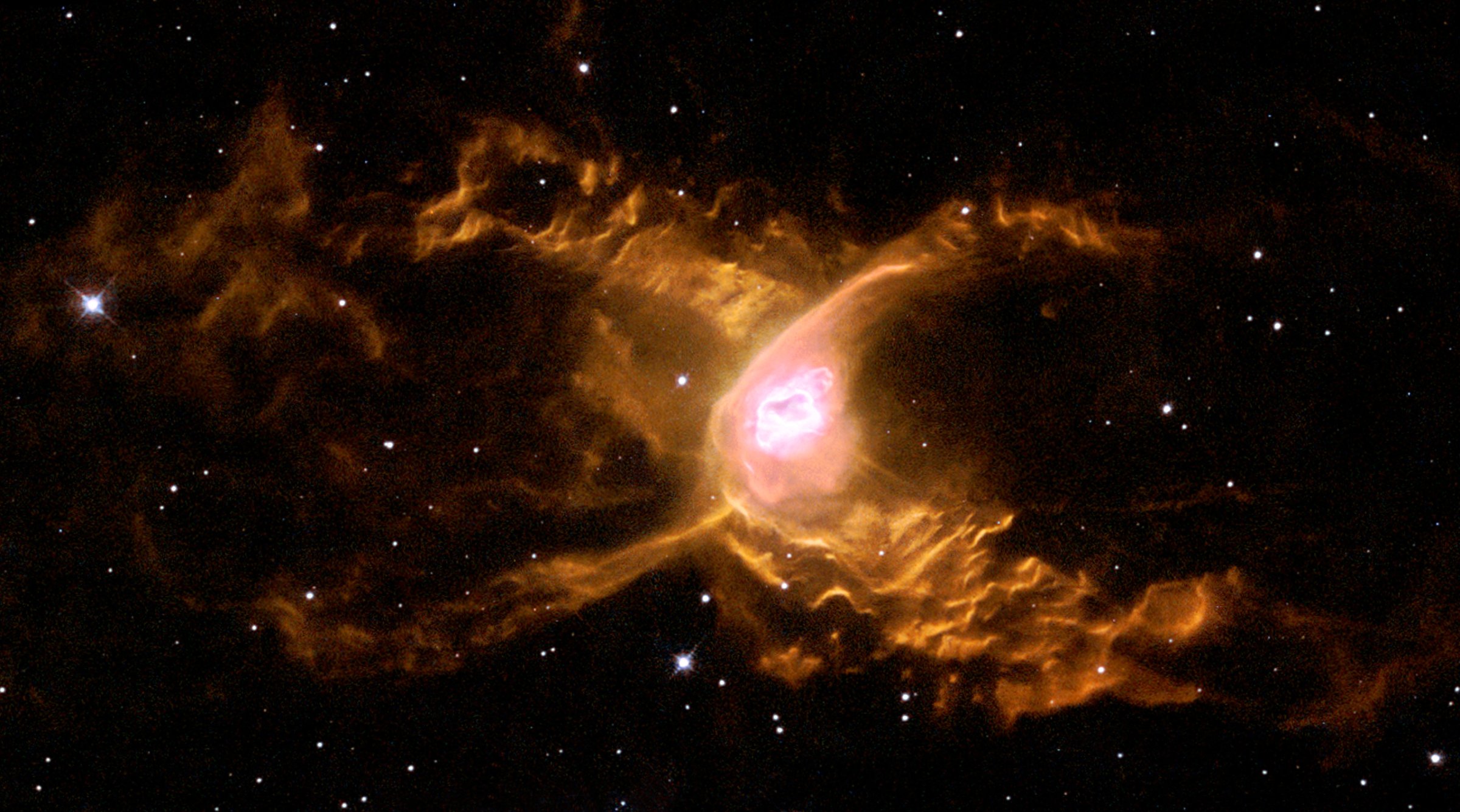
The Hubble space telescope has captured an image of the stunning yet spooky Red Spider Nebula. This two-lobed nebula is located in the constellation of Sagittarius, which some 3,000 light years away from earth. This complex structure is called two-lobed because of its symmetrical appearance.
Over 1,500 of these planetary nebulas exist within the Milky Way. Planetary nebulas play a very crucial role within their galaxies. They are able to recycle heavier elements, which were created within the star, back into space.
Waves, caused by supersonic shock, are formed when the local gas is compressed and heated in front of the rapidly expanding lobes. As a star reaches the end of its life a shell of gas and plasma is formed, which then causes the glowing appearance you see in the nebula. For stars, this is one of the last stages in their lifespan. The Red Spider Nebula has one of the hottest stars known within it and contains winds that can generate waves 100 billion kilometers high, NASA says.
More Must-Reads from TIME
- Cybersecurity Experts Are Sounding the Alarm on DOGE
- Meet the 2025 Women of the Year
- The Harsh Truth About Disability Inclusion
- Why Do More Young Adults Have Cancer?
- Colman Domingo Leads With Radical Love
- How to Get Better at Doing Things Alone
- Michelle Zauner Stares Down the Darkness
Write to Kim Bubello at kim.bubello@time.com